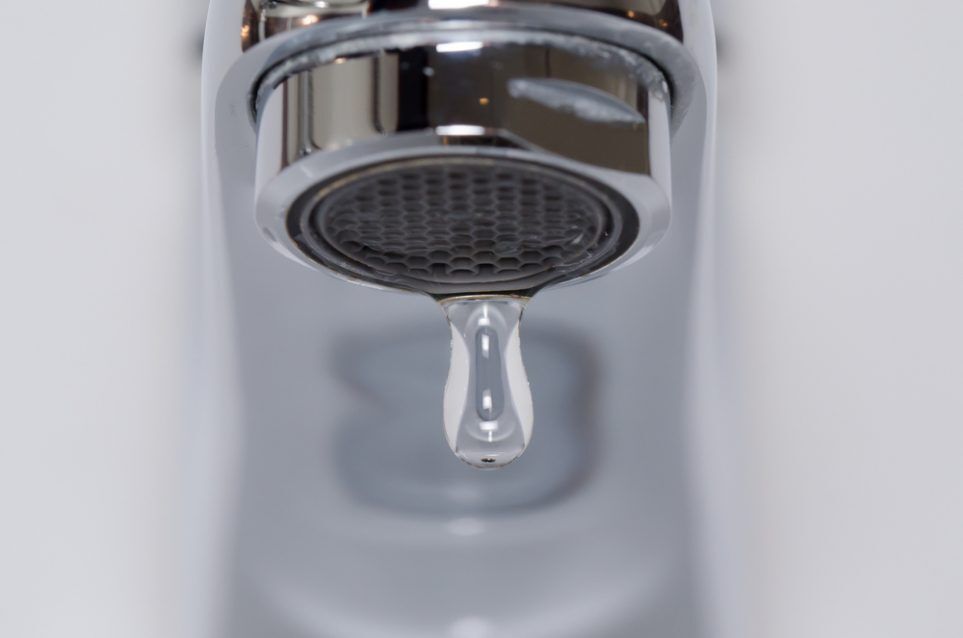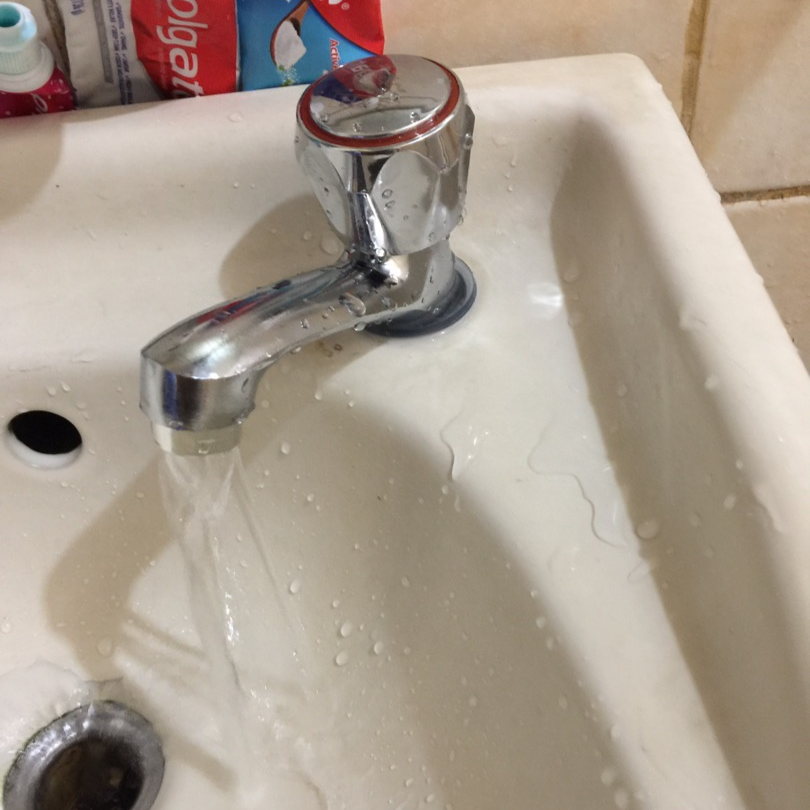My Benefits of Repairing a Faulty Faucet
My Benefits of Repairing a Faulty Faucet
Blog Article
They are making several good points about Leaky Faucets: Why They Happen & What to Do About Them overall in this post further down.

Dripping taps might appear like a small hassle, yet their impact exceeds simply the inconvenience of the noise. From drainage to incurring unnecessary monetary expenses and wellness risks, disregarding a leaking tap can cause numerous effects. In this article, we'll delve into why it's critical to resolve this usual house concern without delay and properly.
Wastefulness of Water
Ecological Effect
Leaking faucets contribute significantly to water wastefulness. According to the Environmental Protection Agency (EPA), a solitary tap leaking at one drip per secondly can lose greater than 3,000 gallons of water annually. This not only pressures water sources but also influences environments and wildlife depending on them.
Step-by-Step Guide to Fixing a Dripping Faucet
Devices Called for
Before attempting to repair a dripping tap, collect the required tools, consisting of an adjustable wrench, screwdrivers, substitute parts (such as washing machines or cartridges), and plumber's tape.
Common Tap Issues and Their Solutions
Determine the sort of tap and the specific concern creating the drip. Typical issues include damaged washing machines, corroded shutoff seats, or damaged O-rings. Describe maker instructions or on-line tutorials for detailed advice on repair services.
Financial Costs
Boosted Water Bills
Past the environmental influence, dripping faucets can blow up water expenses considerably. The built up wastefulness in time converts right into higher utility expenses, which might have been prevented with prompt repairs.
Prospective Property Damage
Moreover, prolonged dripping can lead to damage to components and surface areas bordering the tap. Water build-up can trigger staining, corrosion, and even structural issues if left neglected, causing extra repair service expenses.
Wellness Problems
Mold and Mold Development
The constant visibility of moisture from a dripping tap develops an excellent atmosphere for mold and mildew and mildew development. These fungi not just jeopardize indoor air quality yet likewise pose wellness dangers, particularly for people with breathing problems or allergic reactions.
Waterborne Conditions
Stagnant water in dripping faucets can end up being a breeding place for microorganisms and various other pathogens, boosting the risk of waterborne conditions. Pollutants such as Legionella germs flourish in stagnant water, potentially causing serious diseases when consumed or inhaled.
DIY vs. Professional Repair
Advantages and disadvantages of Do It Yourself Repair Work
While some may attempt to take care of a leaking tap themselves, do it yourself repair work feature their own collection of obstacles. Without appropriate knowledge and devices, DIY attempts can worsen the issue or cause insufficient repair services, prolonging the issue.
Advantages of Hiring a Specialist Plumber
Employing a professional plumber makes certain that the underlying cause of the dripping tap is resolved efficiently. Plumbers possess the experience and devices to detect and fix tap concerns effectively, conserving time and reducing the threat of further damages.
Environmental Responsibility
Private Payment to Preservation
Taking obligation for fixing leaking taps aligns with wider initiatives toward water preservation and ecological sustainability. Every person's activities jointly make a considerable influence on preserving valuable sources.
Lasting Living Practices
By focusing on prompt repairs and embracing water-saving practices, individuals add to sustainable living methods that benefit both present and future generations.
Preventive Measures
Routine Maintenance Tips
To prevent trickling taps, execute regular upkeep such as cleansing aerators, inspecting for leaks, and changing worn-out parts quickly. Additionally, take into consideration setting up water-saving devices or updating to a lot more efficient components.
Significance of Prompt Repairs
Dealing with leaking faucets as soon as they're discovered prevents additional water waste and potential damages, eventually saving both water and cash in the long run.
Impact on Property Worth
Understanding of Well-Maintained Building
Maintaining a home in good condition, including resolving maintenance concerns like trickling taps, enhances its viewed value and charm among potential purchasers or lessees.
Impact on Resale Value
Properties with properly maintained plumbing components, consisting of taps, command higher resale values in the realty market. Addressing dripping faucets can add to a favorable perception during residential property examinations and settlements.
Conclusion
Attending to a trickling faucet exceeds plain benefit; it's a crucial step toward preserving water, minimizing economic costs, and protecting wellness and property. Whether through DIY fixings or specialist assistance, taking action to repair leaking faucets is a little yet impactful method to promote liable stewardship of sources and add to a much healthier, extra lasting future.
How to Fix a Leaky Faucet: Step-by-Step Repair Guide
A leaky faucet may seem like a simple annoyance, but if it's not fixed promptly, that leak could cost hundreds to potentially thousands. From water damage to mold, mildew, and high water bills, even a tiny leak can be catastrophic if left unattended. Damage like this can even affect the overall value of your home, so it's important to take the right approach for leaky faucet repair. You may need the help of a plumber in some cases, but we've got a few tips you can try on how to fix a leaky faucet before calling the pros.
Four Faucet Types
When you're learning how to fix a leaky faucet, the first step is knowing what kind of faucet you're working with! There are four common types.
Cartridge Faucets
Cartridge faucets come in one- or two-handled varieties. In one-handled cartridge faucets, hot and cold water combines in a single cartridge. In the two-handled versions, hot and cold water are controlled separately and mixed in the faucet.
Ball Faucets
Ball faucets have a single lever you push up and down to adjust the pressure and rotate to change the temperature. A slotted metal ball controls the amount of water allowed into the spout.
Compression Washer Faucets
They're the oldest type of faucet, but they're still used in many homes — especially older ones. Compression faucets have two separate handles that, when turned, raise or lower the washer that seals a water valve. This valve stops water from flowing through the faucet when it is turned off.
Disc Faucets
Disc faucets rarely need to be repaired due to their maintenance-free design. The water flow is controlled by two discs — the upper one raises and lowers against a fixed lower disc, creating a watertight seal. If your disc faucet starts leaking, you may need to replace the seals or clean residue buildup from the inlets.
Fixing a Leaky Faucet
Step 1: Turn Off the Water
Whether you're learning how to fix a leaky bathtub faucet or how to fix a leaky kitchen faucet, always turn off the water supply to your working area when you're fixing a leak. The last thing you want is a flood added to your list of things to fix.
Look for the shutoff valves below your sink or around the tub and turn them clockwise to stop the water flow. If your faucet doesn't have shutoff valves, you may need to turn off the water for the whole house. Check to make sure it's off by turning the faucet on. If nothing comes out, you're ready to start the repair.
Step 2: Take Apart the Faucet
How you disassemble your faucet depends on the type of fixture you have. You can use a flathead screwdriver to remove the caps on top of the handle or handles for cartridge and compression faucets. Inside, you should see handle screws. Unscrew these with a screwdriver to remove the handle.
Disc- and ball-style faucets will typically have an inlet screw near the handle, and removing that will reveal the interior of the faucet.
Detach the Valve Stem
For cartridge- and compression-style faucets, you'll see the inner valve stem or cartridge once you remove the faucet handles. If you have a compression faucet, unscrew the brass valve stem. If you have a cartridge faucet, pull out the cartridge. If your cartridge has been in place for a while, it may require some tools or extra force to remove it due to mineral deposits.
Examine and Replace Parts
Once you've removed the parts, check them out to confirm what needs to be replaced. You may see corroded rubber washers, O-rings, stems, or cartridges. On a ball-style faucet, check the seats and springs for damage.
If you need to repair a leaky disc faucet, check the inlet and seals on the lower disc.
Once you determine what parts must be replaced, visit your local hardware store. Bring the damaged parts with you to ensure you can purchase the correct components to replace them.
Clean Valves and Faucet Cavity
If you've removed a stem or cartridge, you may notice mineral buildup in the faucet's threads. Use white vinegar to clean the valve seat by soaking it for a few minutes, then scrub it away with a soft toothbrush and rinse with warm water. You can also clean the interior of the faucet in the same way.
Reassemble the Faucet
Once your faucet is cleaned and the required parts have been replaced, it's time to reassemble it. Put the pieces back together and slowly turn the water supply back on. Doing this slowly is crucial because too much initial water pressure can damage the new hardware you've just installed.
https://homewarranty.firstam.com/blog/how-to-fix-leaky-faucet

I am very serious about Why Is It Important To Fix Your Leaking Tap/Faucet? and I'm hoping you enjoyed the new entry. Sharing is nice. Helping people is fun. Thank you so much for going through it.
Report this page